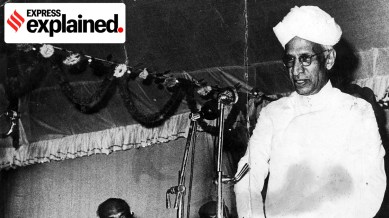Why India celebrates Teachers’ Day on September 5
India celebrates Teachers’ Day annually on September 5, the birth anniversary of former President Sarvepalli Radhakrishnan (1888-1975). Here is why.

India celebrates Teachers’ Day annually on September 5, the birth anniversary of former President Sarvepalli Radhakrishnan (1888-1975). Here is why.
S Radhakrishnan: A Philosopher of Hinduism
One of India’s most recognised and influential thinkers of the 20th century, Radhakrishnan’s life and work was dedicated to defining, defending, and disseminating the Hindu religion. He is seen in philosophy circles as a bridge-builder between India and the West, and credited for his role in shaping the West’s understanding of Hinduism.
Radhakrishnan was among the foremost proponents of the non-dualist Advaita Vedanta tradition in the 20th century, and re-interpreted Adi Shankara’s philosophy for modern times. In doing so, he defended Hinduism against what he said was “uninformed Western criticism”.
Respected teacher
By the 1920s, Radhakrishnan had established himself as one of India’s most respected academics. He held the prestigious King George V Chair at the Calcutta University from 1921 to 1932, was the second vice-chancellor of Andhra University from 1931 to 1936, and the fourth vice-chancellor of Banaras Hindu University from 1939 to 1948. He also held the Spalding Chair of Eastern Religion and Ethics at University of Oxford from 1936 to 1952. Radhakrishnan was knighted in 1931.
Radhakrishnan was also a brilliant teacher, who developed deep personal bonds with students. He thought highly of the profession of teaching, and is recorded as having said several times that “teachers should be the best minds in the country”.
He became the first Vice President (1952-62), and the second President of India (1962-67). In 1962, after he became president, some old students expressed their wish to celebrate his birthday. Radhakrishnan refused a personal celebration, and instead requested his students to honour teachers across the country on his birth anniversary.
Thus began the tradition of celebrating Teachers’ Day on September 5.